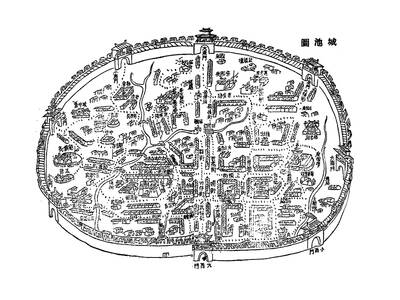In the 1980s, Molly Ringwald was queen of the suburban brat pack. She starred in Sixteen Candles, The Breakfast Club and Pretty in Pink, a series of hit films for teens by John Hughes. Ringwald even made the cover of Time magazine.
It has been a while since Ringwald was in a high-profile movie. But she has stayed plenty busy in front of the camera, with credits in more than 30 movies since 1990, none of them particularly notable.
Lately, she has had more success onstage, playing Sally Bowles in Cabaret on Broadway and the title character in Sweet Charity on tour. She has appeared in plays such as Paul Vogel's Pulitzer Prize-winning How I Learned to Drive.

PHOTO: NY TIMES NEWS SERVICE
FROM BIG BEGINNINGS ...
In Sweet Charity, she plays Charity Hope Valentine, a Depression-era "10 cents a dance" girl transplanted to New York in the 1960s at the Fan-Dango Ballroom.
Ringwald compared the two classic musical theater roles she has played in a recent phone conversation and found them to be "complete opposites."
"Sally Bowles is quite cunning and knowing and she has a hand in her own self-destruction," she said. "As opposed to Charity, who is completely wide-eyed. In a way it was easier for me to play Sally Bowles. I don't know if that means I'm more cunning, but it was easy to play someone who was using her wiles. It's harder to play somebody who is an innocent."
Sweet Charity opened in 1966 as a vehicle for director-choreographer Bob Fosse's wife, Gwen Verdon. With a score by Cy Coleman (music) and Dorothy Fields (lyrics) and a book by Neil Simon, it was inspired by a Fellini movie, Nights of Cabiria, about a streetwalker in Rome.
Not surprisingly, given the Fosse-Verdon pedigree, it is one of the great dance shows, with snappy numbers such as Rich Man's Frug and Big Spender. Ringwald admits that dance is not her forte.
"That's definitely the most challenging part of it," she said. "I'm not really a trained dancer. My focus has always been on singing and acting."
Sweet Charity is the first tour Ringwald has ever done. "I think it's just sheer will," she said when asked about the grind of performing eight shows a week, five of them on Friday through Sunday. "When it gets to the weekend I think, 'Just pace yourself.'"
Traveling with Ringwald on the road is her three-year-old daughter, Mathilda, who apparently has the makings of a trouper.
"She loves it; she doesn't have to do any of the packing," Ringwald said. "For her it's just one hotel to the next. She loves airplanes. She goes to mommy's office that's what she calls my dressing room and listens to me sing. Of course everyone treats her like a little princess. She's having a great time."
Ringwald herself started out young as daughter of a California jazz musician, with whose band she sang as a four-year-old. In the late 1970s, she got a part in the West Coast production of Annie, and soon she was in TV shows The New Mickey Mouse Club and The Facts of Life. Her first movie, at 14, was the Paul Mazursky-directed Tempest, playing Miranda in a Shakespearean adaptation with John Cassavetes, Gena Rowlands and Susan Sarandon.
Ringwald, 38, has had an unusually eclectic, independent-minded career. "I sort of have been all over the place. I'm a little bit of a dilettante," she said.
At one point, Ringwald left Hollywood to live in Paris for four years. Her French movie credits include an improbable King Lear, directed by Jean-Luc Godard, with a cast that included novelist Norman Mailer, Burgess Meredith and Peter Sellars.
What was it like to work with the New Wave legend Godard?
"It was pretty amazing," Ringwald said. "It was one of the highlights. It was such an insane kind of experience."
Ringwald has been trying to develop a sequel to Sixteen Candles in which she would play the mother. Of all her movies, she thinks The Breakfast Club would be best adapted for theater since all the action takes place in a high school detention hall. "It's practically a stage show as it is," she said.
It seems slightly amazing for someone to have a resume that ranges from teen hits to brainy, avant-garde projects such as The Tempest and King Lear to a musical comedy like Sweet Charity. Ringwald suggests as much in musing about what might come after the current tour.
"Well, after having done Charity , I think I'll be ready to do some Chekhov or something very, very serious."
A history of 'Charity'
Molly Ringwald has some tough acts to follow as the star of Sweet Charity. The legendary Broadway hoofer Gwen Verdon was the first Charity Hope Valentine in 1966, putting her indelible stamp on the choreography of her husband, and the musical's director, Bob Fosse.
Many great dancers portrayed the dance hall hostess who is the "bravest individual," from Juliet Prowse to Debbie Allen to Ann Reinking. Shirley MacLaine played Charity in the 1969 film.
Christina Applegate brought Sweet Charity to a new generation in the 2005 revival, directed by Walter Bobbie and choreographed by Wayne Cilento. That production, which spawned the current tour, had some drama when its closing was announced after Applegate broke her foot during a preview in Chicago. After recovering she persuaded producers to let the show go on and rejoined the cast, and it had a modest run on Broadway.

May 26 to June 1 When the Qing Dynasty first took control over many parts of Taiwan in 1684, it roughly continued the Kingdom of Tungning’s administrative borders (see below), setting up one prefecture and three counties. The actual area of control covered today’s Chiayi, Tainan and Kaohsiung. The administrative center was in Taiwan Prefecture, in today’s Tainan. But as Han settlement expanded and due to rebellions and other international incidents, the administrative units became more complex. By the time Taiwan became a province of the Qing in 1887, there were three prefectures, eleven counties, three subprefectures and one directly-administered prefecture, with

Taiwan Power Co (Taipower, 台電) and the New Taipei City Government in May last year agreed to allow the activation of a spent fuel storage facility for the Jinshan Nuclear Power Plant in Shihmen District (石門). The deal ended eleven years of legal wrangling. According to the Taipower announcement, the city government engaged in repeated delays, failing to approve water and soil conservation plans. Taipower said at the time that plans for another dry storage facility for the Guosheng Nuclear Power Plant in New Taipei City’s Wanli District (萬里) remained stuck in legal limbo. Later that year an agreement was reached

What does the Taiwan People’s Party (TPP) in the Huang Kuo-chang (黃國昌) era stand for? What sets it apart from their allies, the Chinese Nationalist Party (KMT)? With some shifts in tone and emphasis, the KMT’s stances have not changed significantly since the late 2000s and the era of former president Ma Ying-jeou (馬英九). The Democratic Progressive Party’s (DPP) current platform formed in the mid-2010s under the guidance of Tsai Ing-wen (蔡英文), and current President William Lai (賴清德) campaigned on continuity. Though their ideological stances may be a bit stale, they have the advantage of being broadly understood by the voters.

In a high-rise office building in Taipei’s government district, the primary agency for maintaining links to Thailand’s 108 Yunnan villages — which are home to a population of around 200,000 descendants of the Chinese Nationalist Party (KMT) armies stranded in Thailand following the Chinese Civil War — is the Overseas Community Affairs Council (OCAC). Established in China in 1926, the OCAC was born of a mandate to support Chinese education, culture and economic development in far flung Chinese diaspora communities, which, especially in southeast Asia, had underwritten the military insurgencies against the Qing Dynasty that led to the founding of